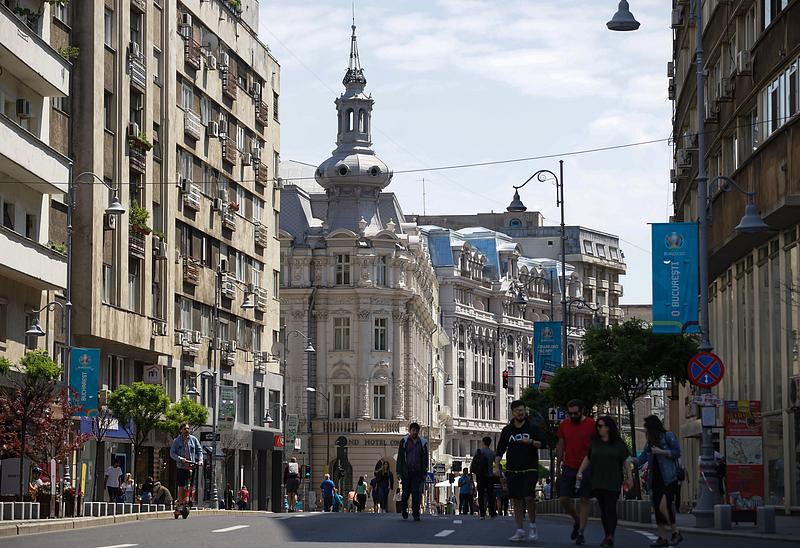Report: Bucharest recorded the highest number of residential sales in the last 15 years in December



Bucharest registered the highest number of residential sales in the last 15 years in December, according to a report by investment management company Colliers. The same report shows that a third of urban Romanians rent or share a home they do not own with parents, relatives, or friends.
Romania remains the European country with the highest number of house and apartment owners, according to official statistics, and although interest in buying a property remains high, a significant proportion continues to live in rented accommodation. 13% of Romanians aged between 18 and 55 in urban areas are renters, and around 18% share a home they do not own with parents, relatives, or friends, according to a recent survey of around 1,000 urban respondents conducted by Unlock Market Research for Colliers.
In a connected trend, property acquisitions accelerated in the final months of the year in the context of proposed changes in tax legislation, in particular the increase in the minimum VAT rate on housing going from 5% to 9% for properties up to around EUR 120,000, as well as increases in notary fees. As a result, many buyers rushed to complete transactions before the end of the year, and, in Bucharest at least, December was a record month, having the highest number of residential sales in 15 years.
Over the past year and a half, the limited availability of financing, coupled with higher interest rates, has caused prices to fall and yields to rise across much of the world, including Romania. However, Colliers’ consultants point out that Romania missed much of the downward yield movement over the past decade and is now seeing less of a correction than others.
As a result, prime office yields in Romania were between 7.25% and 7.75% at the end of last year (compared to 6.75% at the end of 2022), prime retail yields were between 7-7.50% (compared to 6.75% at the end of 2022) and prime industrial yields were between 7.25-7.75% (compared to 7.50% at the end of last year).
“Eurostat statistics show that about 95% of Romanians own their own home, and this percentage makes us the country with the most homeowners in Europe. However, many homes are actually rented, especially in the big cities. This is more evident in new buildings, especially in areas close to business centers, where the proportion of tenants is significantly higher. Many of those who, according to official statistics, are registered as owners, actually live in rented accommodation in other cities,” says Gabriel Blăniță, Associate Director of Valuation & Advisory Services at Colliers Romania.
Colliers has, for the second consecutive year, launched a nationwide survey in urban areas, focusing on the 18-55 age group. The results show that 69% of urban residents aged 18-55 in Romania live in privately owned homes. In general, most renters are young people aged 18-24 (25%) who have flexible jobs or are studying and cannot yet afford to invest in a home, so renting is practically their only option. Another 40% of these young people live together with family or friends.
Bucharest, Cluj-Napoca, Iasi, Timisoara, and Brasov are the main beneficiaries of internal migration and have become the fastest-growing urban centers and metropolitan areas in Europe over the last 20 years. At the same time, the number of foreigners choosing Romania in search of a better future has increased. As a result, 2022 marked two firsts: the resident population increased for the first time since 1989, and the number of newcomers to Romania outnumbered those who left (by 85,000).
This increase has placed pressure on rents. Although rents in Bucharest have risen by an average of 10% over the past year, renting remains a cheaper option than buying, according to Colliers. By comparison, rents in Warsaw and Prague have risen by between 25 and 40%. In other words, in all major regional capitals except Sofia, rent is now cheaper than bank loan rates.
Even though Romanians are interested in renting, the desire to become homeowners is still strong. Compared to other Eastern European countries, Romania is still more affordable for buyers.
Colliers’ data shows that in Bucharest, a Romanian needs, on average, the equivalent of 8 net annual salaries to buy a 60-square-meter apartment, a situation that hasn’t changed much in more than a decade, although it is slightly higher than before the pandemic, when it was around 7 years’ salary. In 2008, at the height of Romania’s property bubble, the same house would have cost roughly the equivalent of 25 years’ average annual salary.
“The conditions for long-term growth are still in place. Romania’s cities are already overcrowded compared to those in the region, and the trend of migration from rural areas and smaller towns to large metropolitan areas continues. In addition, the short and medium-term outlook is also promising: wages are rising again sufficiently to outpace consumer price growth, and we expect interest rates to fall this year. If the labor market remains strong, the outlook for the housing market in 2024 is optimistic. However, we expect the first half of the year to be less active than at the end of last year, but this should not be interpreted as a long-term downward trend for the market,” concludes Gabriel Blăniță.
(Photo source: Lcva | Dreamstime.com)